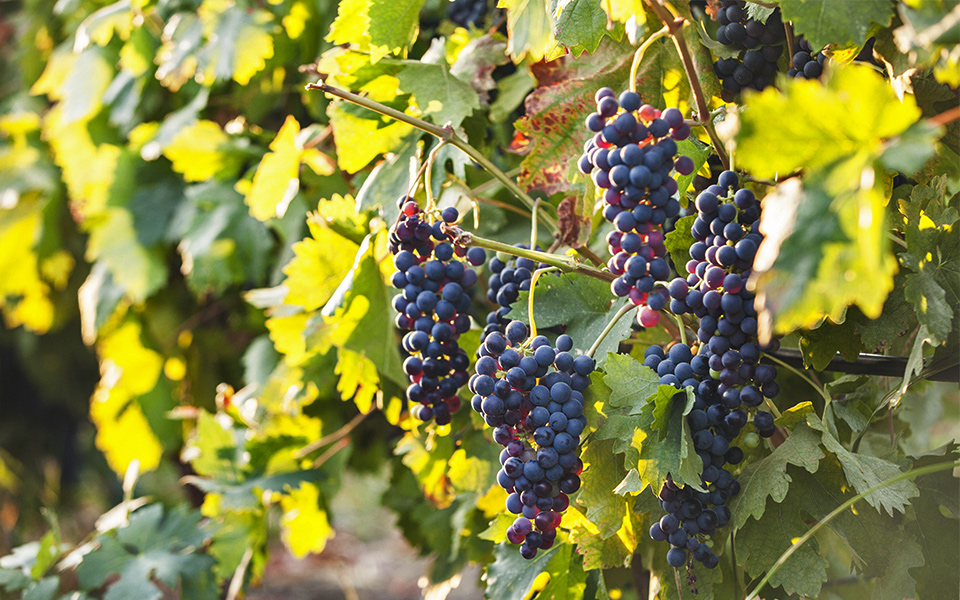Strategically positioned between East and West, Rhodes was one of the first Greek islands to engage in the cultivation of grapes. A plethora of archaeological finds and historical proof attests to the importance of Rhodian amphorae in transporting wine from the island and tells us that these were distinguished from others by an engraving of a rose (“rodo” in Greek) or of Helios, the sun god. This was a form of branding, confirming that the wine was made from Rhodian grapes, and a precursor of the Appellation of Origin system that was established many centuries later in Europe.
Helped by its strong maritime presence, Rhodes was the biggest wine exporter in the region as far back as the 7th c. BC. The first written reference we have for Rhodian wine comes from the great Attic orator Aeschines, a rival of Demosthenes, who was exiled to Rhodes in 330 BC. In a letter, he says that he stayed in a small house with a garden in the area of Kamiros and that his friends treated him to olive oil, honey and a wonderful wine that was far superior to that of Athens.
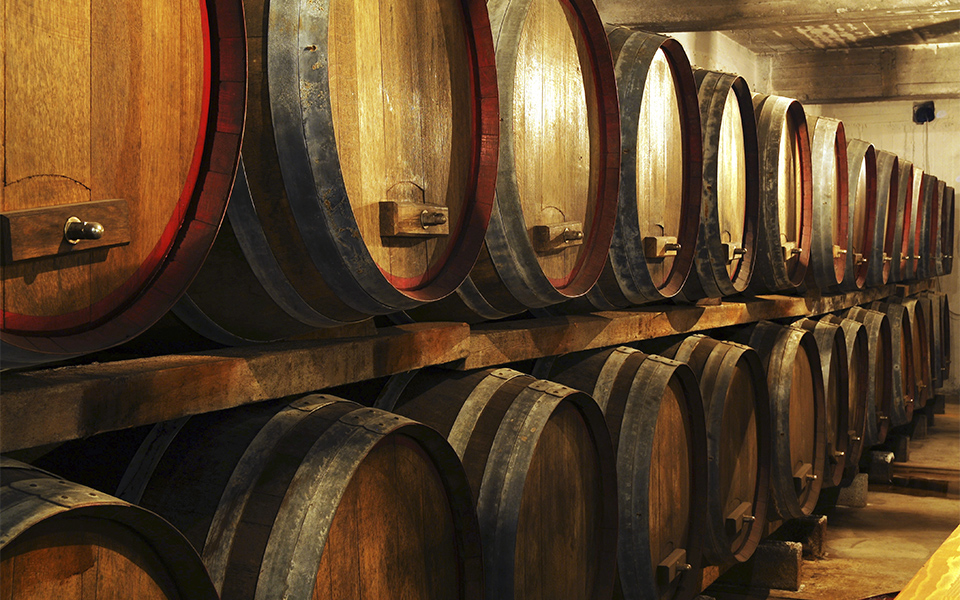
Rhodian wine went from strength to strength, thriving even after the Knights of St John occupied the island in the early 14th century. The 1522 conquest by the Ottoman army of Suleiman the Magnificent signaled the start of a very difficult period in grape cultivation that only really ended when the Italians took control of the island in 1912.
Mt Attavyros, 1215m high, is at the center of Rhodes’ grape-growing heartland, a beautiful, Natura 2000-protected area, with verdant valleys, pine forests and a cypress forest in Embonas that is a designated natural monument. The best vines grow at an altitude of 650-700 meters. The vineyards are low-yield and are exposed to the Aegean’s strong northerly winds that moderate the high temperatures and provide a favorable climate for high-quality grapes.
The island’s main varieties are Athiri and Amorgiano, together with two Muscats, the petits grains (“small-berried”) and the Di Trani, a clone of Muscat introduced by the Italians from Puglia. In the limestone-rich soil of Attavyros, there are Athiri vines over 70 years old, growing from their own roots rather than from American – resistant to phylloxera – rootstocks, as the spread of this pest in the Dodecanese stopped at Kos and never reached Rhodes. The wines made from the old Athiri vines are like a completely different variety; they stand the passage of time well, acquiring a more concentrated and layered character. Five years in the bottle often transforms them into smoky wines with an impressive mineral presence.

© Clairy Moustafellou
As far as reds go, the dominant variety is Amorgiano, which is in fact a Mandilaria that bears this name here because locals believe it came from the island of Amorgos. Traditionally, it gives rustic wines with aggressive tannins, an intense color and high acidity that are tough to enjoy when they are still young. The abundance of this variety means that it is often blended with other grapes to smooth the edges of its rugged nature.
Rhodes has two Protected Designation of Origin (PDO) wines. PDO Rhodes refers to white wines (with a minimum of 70 percent Athiri blended with Malagousia and Assyrtiko), rosés and reds (70 percent Mandilaria minimum with Mavrothiriko), while it has also included sparkling wines since 2011. PDO Muscat of Rhodes is made from white Muscat Blanc and Muscat di Trani. Despite the abundance of native varieties, winemakers also cultivate international grapes, foremost among them the Grenache Rouge, whose high yields has resulted in problems with quality.
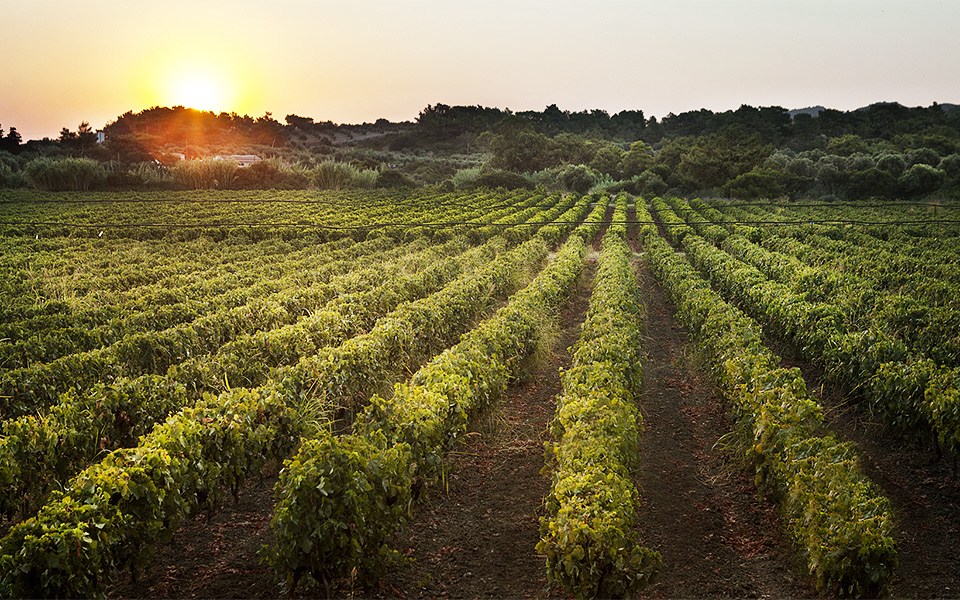

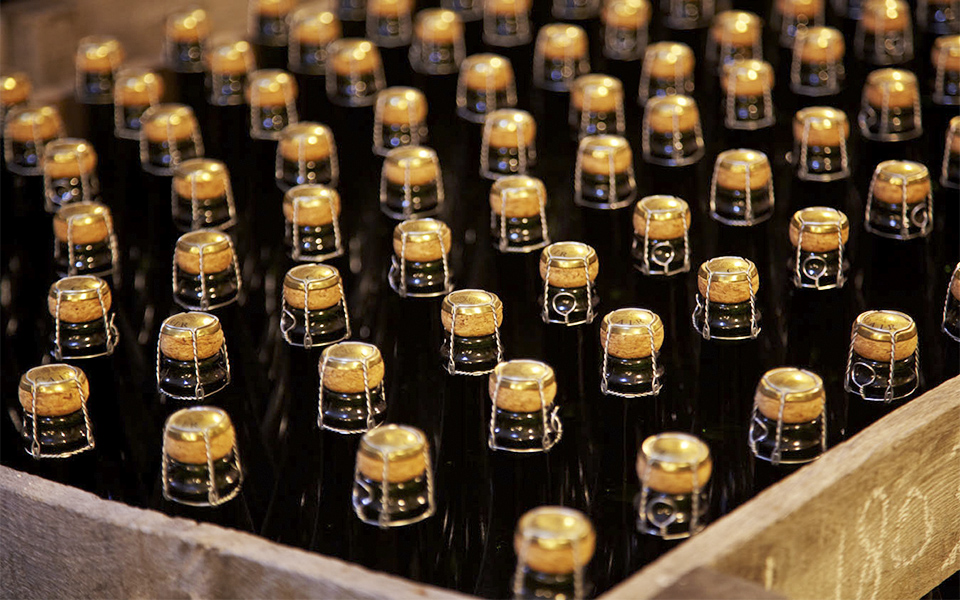
Rhodes’ wine industry is intrinsically linked to the acronym CAIR (Compagnia Agricola Industriale Rodi), a winery established in 1928 by a group of Italian investors. This winery was responsible not only for keeping grape cultivation alive, but also for making Rhodes one of the few wine-producing areas in Greece whose vineyards expanded after World War II. The company came under the ownership of the Bodossakis Group after the Dodecanese islands became part of the Greek state in 1947. In 1957, it was sold to the Dodecanese Association of Agricultural Cooperatives.
CAIR became wildly popular as a sparkling wine producer, with its Velvet and Rosé Reserve labels constituting impressive examples of complex sparkling wines. Before Greece’s burgeoning middle class discovered imported champagnes, every bottle of CAIR was a “cause for celebration” according to an old ad, and annual sales reached 1.5 million bottles. For several years now, the company has been focusing on quality still wines as well, such as the Rodos 2400, launched in 1992 to celebrate 2,400 years since the founding of Rhodes Town.

Rhodes’ other big producer is Emery, founded in 1923 and named after Emery d’ Amboise, the 41st Grand Master of the Knights of St John, who served in that position from 1503 to 1512. The company is now run by the third generation of the Triantafylloy family. It’s been producing wine since the mid – 1960s and built its current winery – one of the biggest in Greece – in 1974 in the village of Embonas, at an altitude of 700 meters. The vineyards, cultivated on the northwesterly slopes of Mt Attavyros, are renowned for the quality of their Athiri and Amorgiano grapes.
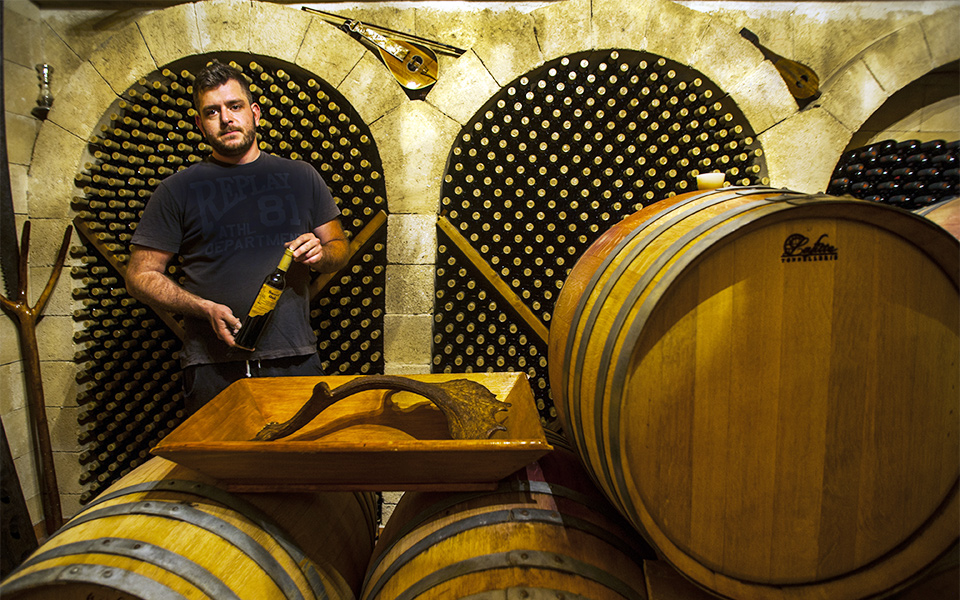
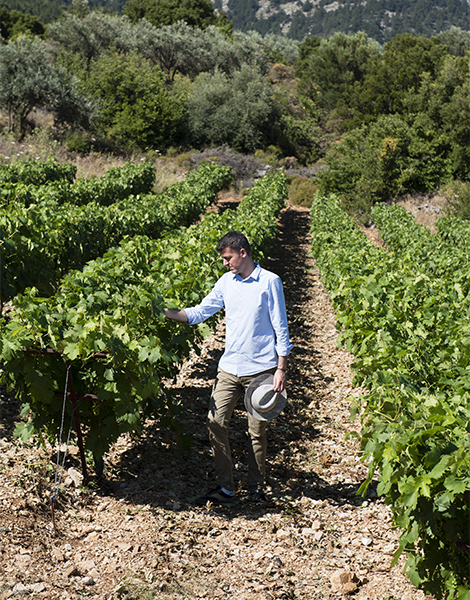
© Clairy Moustafellou
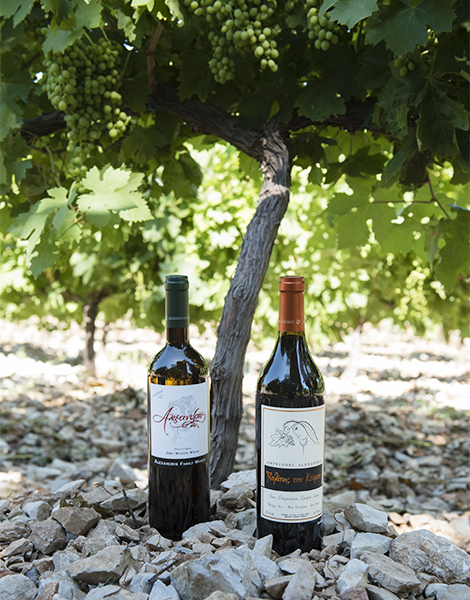
© Clairy Moustafellou
There are, in addition, a few small artisanal wineries in Rhodes, such as the Alexandris Family Winery, which has been around since 1968 and is producing some very interesting wines under the direction of third-generation winemaker Panayiotis Alexandris, a graduate of Montpellier’s famed university. The winery has around four hectares of vines producing just 20,000 bottles a year, with each label representing about 2,000 bottles. Aged examples of own-rooted Athiri from an altitude of 700 meters that matures for 11 months on the lees are more powerful than what we expect from this variety, with an intense smokiness and a long aftertaste. There are other interesting small wineries as well, including Kounakis and Tatakis.
The island’s lengthy history in winemaking is well known and its potential for producing high-quality wines is great. Rhodes has yet not achieved the same success as other Greek islands like Santorini, Paros or Kefalonia; nonetheless, it is an outstanding wine tourism destination offering a plethora of exciting wines, made from both indigenous and international varieties.

